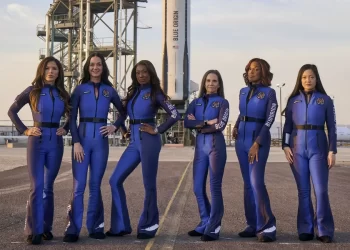By: Greg Rector
Christmas music set lists were pretty much locked in with standards that had been around for decades in 1984. We would sing along to “Silver Bells” “Rudolph the Red-Nosed Reindeer” “Little Drummer Boy” and “Silent Night” and if you wanted to pep up the Christmas spirit there was always the 1981 Boney M Christmas album. Otherwise, it was pretty much Bing Crosby, Elvis Presley, and a few others singing those classic Christmas songs. There was something awful happening though in Africa. Beginning in 1983 but garnering worldwide attention in 1984 was the famine happening in Ethiopia. By 1984 we were no longer held hostage to seeing film recorded the day before and shown the next day on the television news. Satellites had improved to the point where things were truly live. The images from Ethiopia were horrifying and just as this year with Ukraine, people around the world wanted to help. The problem was the NGOs (Non-Governmental Agencies) and wealthier countries were unable and sadly many unwilling to do much about it. This is where BBC reporter Michael Buerk enters the picture.
Power of Television
In October of 1984, Buerk had a series of reports from Ethiopia. One of those reports featured a nurse Claire Bertschinger, whose grim task was to select the children who could still be possibly saved and were given the limited resources available. Buerk’s reporting described what was happening as a “biblical famine in the 20th century” and declared Ethiopia was “the closest thing to hell on earth”, The people of the United Kingdom inundated relief agencies with donations. The biggest factor in what was to unfold though was Bob Geldof, lead singer of the Boomtown Rats (I Don’t Like Mondays), and his then-girlfriend Paula Yates a British TV presenter seeing the reports by Buerk. Geldof was so affected seeing what Bertschinger was dealing with “In her was vested the power of life and death. She had become godlike, and that is unbearable for anyone.” Yates hosted a weekly live show called “The Tube” and her next show featured Midge Ure and his group Ultravox. Geldof and Ure had worked on a previous charity event. Geldof spoke with Ure and a couple of days they met for lunch, discussed what was happening, and decided to record a charity record.
Organization
Geldof began contacting other singers and bands such as Sting, of The Police fame ( Maybe the biggest band in the world at the time), and Simon LeBon of Duran Duran who said the entire group would participate, the same applied to Spandau Ballet (True), and Geldof suddenly realized he had the biggest names in UK music saying yes, then he would have no problem with other British and Irish acts, all who agreed to participate free of charge. The next thing he knew because of his connections was the backing from the then very powerful UK music magazines who donated advertising space to promote the song. Geldof’s label Phonogram and the parent company Polygramalso agreed to do their part free of charge.
The Song
Geldof and Ure next had to come up with a song. They realized they could not do a cover of a classic as they would have to pay royalty fees if they did that. That would take away from the goal of this song raising funds. They also knew they had to get this done in time to be released before Christmas. As with many songwriters, Geldof had written another song “It’s My World” and was able to change the lyrics to fit what became “Do They Know It’s Christmas” Ure did the music and all that needed to be done next was getting everyone together to record the song. No small feat getting so many acts to be available on the same day in one location.
Recording
Two of the UK’s biggest names in music were unable to be at the recording studio on November 25th. David Bowie and Paul McCartney both recorded messages of support and those would become the B-side of the single. As artists were arriving at the studio for the session Geldof had made a deal with The Daily Mirror to have access to photograph the session ensuring more publicity. From 10:30 AM until 8:00 AM the next day all the various parts were recorded. The collective of artists became known as Band-Aid.
The Release
Originally Geldof and Ure were simply hoping to raise what they could. They ended up having the fastest-selling single of all time upon the single being released on December 3rd, 1984. There was no time for a fancy music video but the simple release of the artists recording the track in the studio was seen on every music channel not just in The UK, but globally. The song didn’t reach number in the U.S. it peaked at number three, in the UK however it remained the number one single for five weeks. In Britain, at the time they had a “Value Added Tax” which the government of Prime Minister Margaret Thatcher initially refused to waive. The public was enraged and the UK government ended up donating the revenue to the cause. Three million copies of the single in the UK and a further 1.9 million sold in the U.S.
The Result
The rest of the music world soon joined in from both Canada (Tears Are Not Enough) and the United States (USA For Africa and We Are The World), eventually in 1985 the massive Live Aid concerts from London and Philadelphia. It was amazing that in twenty days from conception to completion so many came together for the cause. The public response was amazing and sustained. Not sure that could happen in today’s landscape. It would be nice to believe that the true spirit of the holiday season where ” Peace on earth, goodwill toward men” was not just said, it was lived.
Happy Holidays to one and all.


 NFL
NFL






